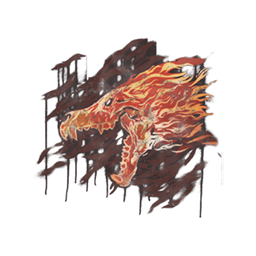Print Fix Hub
Your go-to source for everything print-related, from troubleshooting to tips.
Graffiti Dreams: Where CS2 Meets Urban Expression
Explore the vibrant fusion of CS2 and urban art in Graffiti Dreams! Unleash your creativity and dive into the world of graffiti expression.
Exploring the Intersection of CS2 and Urban Art: A New Era of Expression
The world of digital art has witnessed a significant transformation with the emergence of CS2, a platform that seamlessly integrates technology and creativity. As urban artists increasingly adopt this innovative medium, we are seeing a unique convergence of traditional street art and digital expression. Exploring the Intersection of CS2 and Urban Art reveals how artists utilize the capabilities of this technology to expand their creative boundaries and engage with a broader audience. From large-scale projections on city buildings to interactive installations, CS2 has opened up new avenues for urban art that were previously unimaginable.
In this new era of expression, the streets are no longer the sole canvas for artists. With CS2 empowering creators, the accessibility of tools and resources has led to a renaissance of urban art that challenges conventions. Artists are now able to blend physical installations with virtual elements, resulting in dynamic experiences for viewers. As we continue to dive deeper into this intersection, it becomes clear that the fusion of CS2 and urban art is not just a fleeting trend but rather a pivotal shift that could redefine how we perceive art in public spaces.

Counter-Strike is a renowned series of tactical first-person shooter games where players assume the roles of terrorists or counter-terrorists. The latest installment, known as CS2, has brought significant updates and enhancements to the gameplay experience. Players can find useful tools to analyze their weapons, including the cs2 inspect link, which allows them to inspect their loadouts more effectively.
How Graffiti Reflects Society: Insights from CS2
Graffiti serves as a powerful form of expression, allowing artists to voice their thoughts, feelings, and social criticisms. In the digital age, games like CS2 (Counter-Strike 2) provide not just entertainment, but also a unique canvas for graffiti, bridging the gap between virtual and real-world contexts. As players navigate through intricate maps, the presence of graffiti can often tell stories or convey messages that reflect societal attitudes, struggles, and aspirations. This phenomenon showcases how even in a competitive environment, art can interject social dialogue and cultural identity.
The relationship between graffiti and society is multidimensional; it acts as a mirror, reflecting cultural dynamics, political tensions, and community sentiments. Within the context of CS2, graffiti becomes a form of digital activism, where players can express dissent or solidarity through their art. By analyzing these visual messages, we gain insights into the collective psyche of players and the broader communities they represent. In essence, graffiti in gaming not only enriches the player's experience but also fosters discussions about the implications of art in our society.
Can Digital Art Revolutionize Traditional Graffiti?
As urban spaces evolve, the intersection of digital art and traditional graffiti presents an exciting opportunity for artists to expand their creative horizons. Digital art offers new tools and techniques that can complement graffiti, allowing artists to experiment with colors, textures, and even interactive elements. This fusion can lead to a fresh wave of public art that not only beautifies our cities but also engages viewers in ways that traditional graffiti alone may not achieve. Imagine augmented reality experiences where murals come to life through a smartphone app or vibrant projections that transform dull walls into stunning digital canvases.
Moreover, the rise of social media platforms has amplified the visibility of both digital art and graffiti, enabling artists to share their work with a global audience instantly. By embracing this digital crossover, traditional graffiti could find new relevance in today's art scene. Artists who blend traditional techniques with modern technology challenge the boundaries of creativity, encouraging others to innovate. Ultimately, this may not just revolutionize graffiti but also foster an appreciation for diverse artistic expressions, bridging the gap between street art and digital mediums in a way that resonates within contemporary culture.